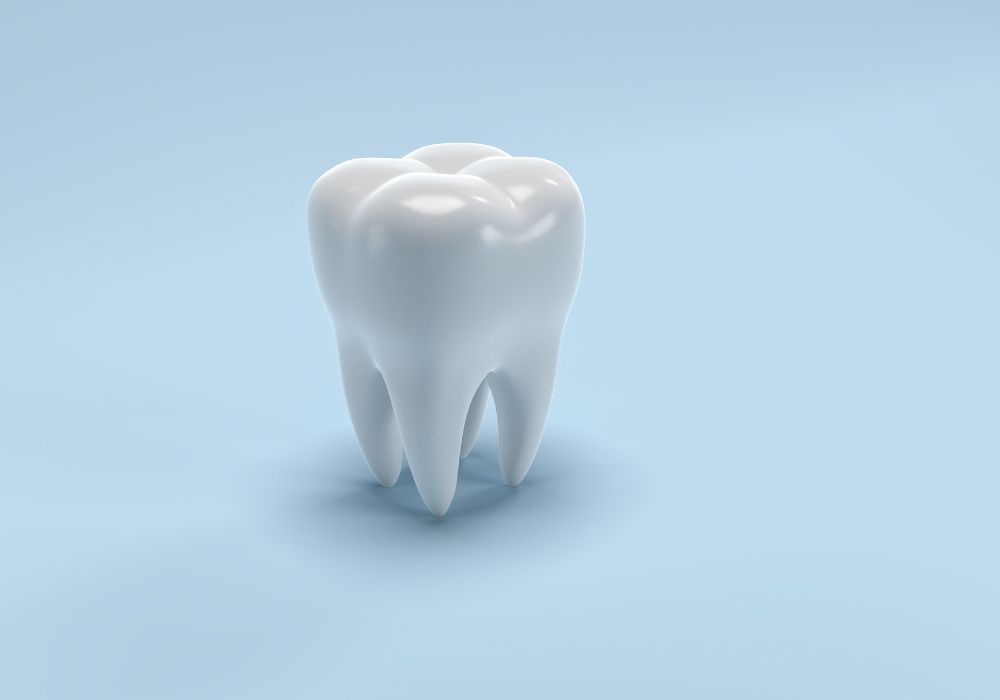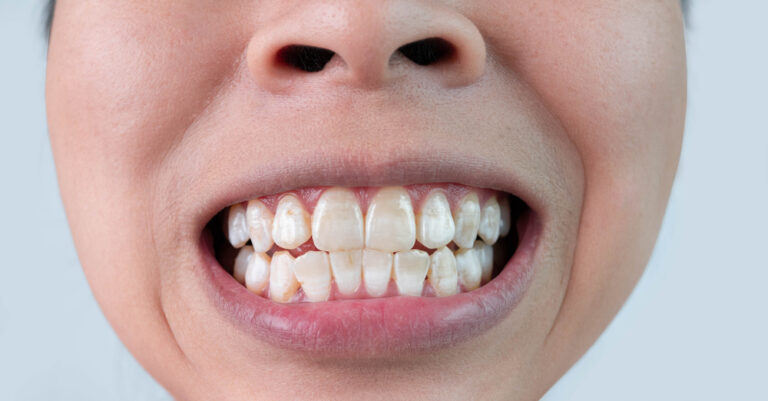Are teeth hard to remove? If you’re facing the prospect of a tooth extraction, you may be wondering just how difficult the process will be. The answer, as with many things related to dental health, is that it depends on a variety of factors.
First and foremost, the difficulty of a tooth extraction will depend on the specific tooth in question. Wisdom teeth, for example, are notoriously difficult to remove due to their location at the back of the mouth and the fact that they often grow in at odd angles. Similarly, teeth that are impacted (meaning they haven’t fully emerged from the gums) can be more difficult to extract than those that have fully erupted. Additionally, teeth that are decayed or damaged may be more fragile and prone to breaking during the extraction process.
Other factors that can impact the difficulty of a tooth extraction include the patient’s age and overall health, as well as the experience and skill of the dentist performing the procedure. In general, younger patients tend to have teeth that are easier to extract, as their roots are not yet fully formed. Additionally, patients who have underlying health conditions or who are taking certain medications may be more prone to complications during the extraction process. Finally, the skill and experience of the dentist can play a major role in how smoothly the extraction goes. If you’re concerned about the difficulty of your upcoming tooth extraction, it’s always a good idea to talk to your dentist and ask any questions you may have.
Understanding Tooth Anatomy

Tooth anatomy is a crucial aspect of understanding why some teeth are harder to remove than others. Teeth are made up of several layers, each with its own unique function. Here’s a breakdown of the different parts of a tooth:
Enamel
Enamel is the outermost layer of the tooth and is the hardest substance in the human body. It is primarily made up of calcium phosphate and protects the tooth from damage caused by chewing, biting, and grinding.
Dentin
Dentin is the layer of the tooth beneath the enamel. It is softer than enamel but still very strong. Dentin is made up of tiny tubes that run from the pulp to the enamel and helps to transmit sensations like hot and cold.
Pulp
The pulp is the innermost layer of the tooth and is made up of soft tissue, blood vessels, and nerves. It is responsible for maintaining the tooth’s health and vitality by providing nourishment and oxygen to the tooth.
Cementum
Cementum is a layer of hard tissue that covers the root of the tooth. It helps to anchor the tooth to the jawbone by attaching to the periodontal ligament.
Periodontal Ligament
The periodontal ligament is a group of fibers that attach the tooth to the jawbone. It acts as a shock absorber, cushioning the tooth from the forces of chewing and biting.
Jawbone
The jawbone, also known as the alveolar bone, is the bone that surrounds and supports the teeth. It is responsible for holding the teeth in place and providing a stable foundation for chewing and biting.
Understanding the different layers of a tooth can help you understand why some teeth may be harder to remove than others. For example, teeth with longer roots or more extensive root systems may be more challenging to extract because they are more firmly anchored in the jawbone. Additionally, teeth that have been damaged or have extensive decay may be more difficult to remove because the surrounding tissue may be inflamed or infected.
Why Teeth May Need Removal
Sometimes, despite your best efforts to take care of your teeth, it may be necessary to have one or more teeth removed. Here are some common reasons why teeth may need to be extracted:
- Tooth decay: When a cavity is left untreated, it can spread to the pulp of the tooth and cause an infection. This infection can lead to a painful abscess, which may require extraction.
- Gum disease: If gum disease is left untreated, it can cause the gums to pull away from the teeth, creating pockets that become infected. In severe cases, the infection can spread to the bone and cause the teeth to become loose, which may require extraction.
- Impacted teeth: Sometimes, teeth can become impacted, which means they are unable to emerge from the gums. This can be due to overcrowding, or because the tooth is growing at an angle. Impacted teeth can cause pain and swelling, and may need to be extracted.
- Orthodontic treatment: If you are undergoing orthodontic treatment and your teeth are overcrowded, it may be necessary to have one or more teeth removed to create enough space for the remaining teeth to shift into place.
- Wisdom teeth: Wisdom teeth, also known as third molars, often need to be removed because they can cause pain, infection, and other dental problems. In some cases, they may not even emerge from the gums, and can become impacted.
If you are experiencing any of these issues, your dentist may recommend extraction as the best course of treatment. While the thought of having a tooth removed can be daunting, it is important to remember that modern dental techniques and anesthesia can make the process as comfortable and painless as possible.
Types of Tooth Extractions

If you have a damaged or decayed tooth, your dentist may recommend a tooth extraction. There are two types of tooth extractions: simple extraction and surgical extraction.
Simple Extraction
A simple extraction is a routine procedure that is done on a tooth that is visible in your mouth. During this procedure, your dentist will use a tool called an elevator to loosen the tooth and then remove it with forceps. This procedure is done under local anesthesia, and you will feel pressure but no pain.
After the tooth is removed, your dentist will place gauze over the socket and ask you to bite down to help stop the bleeding. You may experience some swelling and discomfort for a few days after the procedure, but this can be managed with over-the-counter pain medication and ice packs.
Surgical Extraction
A surgical extraction is a more complex procedure that is done on a tooth that has not fully erupted or is impacted. This procedure is done under local or general anesthesia, and you will feel no pain during the procedure.
During a surgical extraction, your dentist will make a small incision in your gum to access the tooth. If the tooth is impacted, your dentist may need to remove some bone tissue to access it. Once the tooth is exposed, your dentist will use forceps to remove it.
After the tooth is removed, your dentist will place gauze over the socket and ask you to bite down to help stop the bleeding. You may experience more swelling and discomfort than with a simple extraction, and your dentist may prescribe pain medication to manage this.
Overall, tooth extractions are common dental procedures that can help alleviate pain and prevent further damage to your teeth and gums. If you are experiencing dental pain or have a damaged tooth, talk to your dentist about whether a tooth extraction is right for you.
The Process of Tooth Removal
If you need to have a tooth removed, it’s natural to feel nervous or anxious about the process. However, understanding what to expect during the procedure can help ease your concerns. Here’s a breakdown of the typical steps involved in tooth removal:
- Preparation: Before the tooth is removed, your dentist or oral surgeon will numb the area around the tooth with a local anesthetic. If you’re particularly anxious about the procedure, they may also offer you a sedative to help you relax.
- Extraction: Once the area is numb, the dentist or surgeon will use specialized tools to loosen the tooth from its socket in the jawbone. Depending on the tooth’s location and condition, they may need to make incisions in the gum tissue to access the tooth.
- Removal: Once the tooth is loosened, the dentist or surgeon will gently remove it from the socket. In some cases, they may need to break the tooth into smaller pieces to make it easier to remove.
- Aftercare: After the tooth is removed, your dentist or surgeon will give you instructions on how to care for the area to promote healing and prevent infection. This may include using ice packs to reduce swelling, avoiding hard or crunchy foods, and taking pain medication as needed.
Overall, tooth removal is a relatively straightforward procedure that can usually be completed in just a few minutes. While it’s natural to feel apprehensive about the process, rest assured that your dentist or oral surgeon will take steps to ensure your comfort and safety throughout the procedure.
Aftercare and Recovery
After a tooth extraction, it is essential to take care of your mouth to ensure proper healing and avoid complications. Here are some tips to help you with aftercare and recovery:
1. Bite on a Gauze Pad
After the tooth extraction, your dentist will place a gauze pad on the extraction site and ask you to bite down on it firmly for about 30-45 minutes. This pressure helps to stop the bleeding and allows a blood clot to form. Avoid changing the gauze pad too frequently, as this can dislodge the blood clot and cause bleeding.
2. Apply Ice Packs
Swelling is common after a tooth extraction. Applying ice packs to the affected area for 20 minutes at a time can help reduce swelling and discomfort. Be sure to wrap the ice pack in a towel or cloth to avoid direct contact with the skin.
3. Take Pain Medication
Your dentist may prescribe pain medication to help manage any discomfort or pain you may experience after the extraction. Follow the dosage instructions carefully and do not exceed the recommended dose.
4. Avoid Smoking and Drinking Through a Straw
Smoking and drinking through a straw can dislodge the blood clot and delay the healing process. It is best to avoid smoking and drinking through a straw for at least 24 hours after the extraction.
5. Eat Soft Foods
Stick to soft foods like soup, yogurt, and mashed potatoes for the first few days after the extraction. Avoid hard, crunchy, or chewy foods that can irritate the extraction site.
6. Practice Good Oral Hygiene
Brush your teeth gently, avoiding the extraction site, and rinse your mouth with warm salt water after meals and before bed. This helps to keep the extraction site clean and promote healing.
By following these aftercare tips, you can help ensure a smooth and comfortable recovery after your tooth extraction.
Potential Complications

When it comes to tooth extractions, there are potential complications that can arise. While most extractions are straightforward and uncomplicated, it’s important to be aware of the possible risks involved.
Dry Socket
One of the most common complications after a tooth extraction is dry socket. This occurs when the blood clot that forms in the socket where the tooth was removed becomes dislodged or dissolves before the wound has had a chance to heal. This can be quite painful and can delay the healing process. To prevent dry socket, it’s important to follow your dentist’s aftercare instructions, which may include avoiding smoking, using a straw, or rinsing your mouth vigorously.
Infection
Infection is another possible complication of tooth extraction. This can occur if the wound is not properly cleaned or if bacteria enter the socket. Signs of infection may include fever, swelling, and pain. To prevent infection, be sure to follow your dentist’s aftercare instructions, which may include taking antibiotics, rinsing your mouth with salt water, and avoiding certain foods.
Bleeding and Swelling
Bleeding and swelling are common after a tooth extraction, but excessive bleeding or swelling can be a sign of a problem. If you experience significant bleeding or swelling, contact your dentist immediately. To help reduce swelling, apply an ice pack to the affected area for 10-20 minutes at a time. To help control bleeding, bite down on a piece of gauze or a tea bag for 30-45 minutes.
In summary, while tooth extractions are generally safe and straightforward, there are potential complications that can arise. By following your dentist’s aftercare instructions and being aware of the possible risks involved, you can help minimize your chances of experiencing any complications.
Preventing Tooth Removal
If you want to avoid tooth removal, there are a few things you can do. Here are some tips to help you keep your teeth healthy and strong:
Regular Dental Checkups
One of the best ways to prevent tooth removal is to visit your dentist regularly. Your dentist can identify problems early on and provide treatment before they become more serious. During your checkup, your dentist will examine your teeth and gums, take x-rays if necessary, and clean your teeth to remove plaque and tartar buildup.
Good Oral Hygiene
Good oral hygiene is essential for preventing tooth removal. Make sure you brush your teeth twice a day and floss at least once a day. Use a fluoride toothpaste and a soft-bristled toothbrush to clean your teeth and gums thoroughly. If you have trouble reaching certain areas of your mouth, consider using an interdental cleaner or a water flosser.
Healthy Diet
Eating a healthy diet is also important for preventing tooth removal. Avoid sugary and acidic foods and drinks that can damage your teeth and gums. Instead, choose foods that are high in calcium, such as milk, cheese, and yogurt, as well as foods that are rich in vitamins and minerals, such as fruits, vegetables, and lean proteins.
By following these tips, you can help prevent tooth removal and keep your teeth healthy and strong for years to come. Remember to visit your dentist regularly, practice good oral hygiene, and eat a healthy diet to maintain optimal oral health.
Frequently Asked Questions
How painful is tooth extraction?
Tooth extraction can be uncomfortable, but it should not be painful. Your dentist or oral surgeon will use anesthesia to numb the area around the tooth, so you won’t feel any pain during the procedure. After the procedure, you may experience some discomfort, but your dentist will prescribe pain medication to help manage it.
What are the risks of tooth extraction?
As with any medical procedure, there are risks associated with tooth extraction. The most common risks include bleeding, infection, and damage to surrounding teeth or nerves. However, these risks are rare, and your dentist or oral surgeon will take steps to minimize them.
How long does it take to recover from tooth extraction?
Recovery time varies depending on the complexity of the extraction and your overall health. In general, it takes about a week to ten days to recover fully from a tooth extraction. During this time, you should avoid strenuous activity and follow your dentist’s instructions for caring for your mouth.
Can a broken tooth be extracted?
Yes, a broken tooth can be extracted. In fact, if a tooth is severely damaged, extraction may be the best option. Your dentist will evaluate the condition of the tooth and recommend the best course of action.
What are some alternatives to tooth extraction?
There are several alternatives to tooth extraction, including root canal therapy, dental crowns, and dental implants. Your dentist will evaluate the condition of your tooth and recommend the best course of treatment.
Is it necessary to remove wisdom teeth even if they’re not causing any problems?
It is not always necessary to remove wisdom teeth that are not causing any problems. However, wisdom teeth can cause problems if they become impacted or infected. Your dentist will evaluate the condition of your wisdom teeth and recommend the best course of action.






